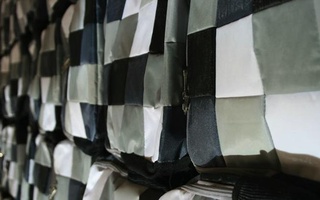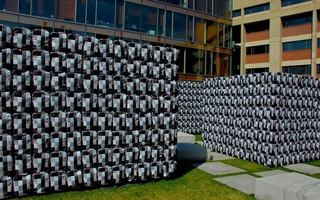Athletes and coaches often talk about not letting numbers define them. While statistics tell part of the story, sports cannot be reduced to field goal percentages and batting averages. Recruiters often look beyond the numbers to find blossoming talent; player intangibles can balance out a poor statistical year. The impetus to avoid an entire year or career of work being boiled down to a series of numbers is understandable. However, in the Ivy League recruiting process, a single number as simple as it is misunderstood can make or break a student-athlete’s collegiate future: the Academic Index.
The Academic Index, or AI, is a combination of a student’s class rank and SAT scores typically calculated for seniors. Every prospective Ivy League student is assigned a number, which ranges from 60 to 240—a perfect score. The AI is divided into three categories. While the first two reflect SAT I and SAT II scores, the third is a combination of class rank and GPA adjusted on the same 20 to 80 scale to round out the score. Although the league does not disclose its data, the New York Times estimated that the average student at an Ivy League institution has an AI around 220, with Harvard, Yale, and Princeton boasting slightly higher averages than their other Ancient Eight counterparts.
“The AI does not make decisions for us,” Director of Admissions Marlyn E. McGrath-Lewis ’70-’73 said in an e-mail. “It provides a way to gauge how each Ivy institution does in enrolling ‘representative’ students who are recruited athletes. The league created the AI exactly for that purpose.”
Ivy League rules dictate that no athletic department is permitted to have an average AI among its student-athletes more than one standard deviation below the average for non-athlete enrollees in a given class. This limits the pool of potential recruited athletes but also ensures that the Ivy League can maintain its point of pride: having student-athletes who “annually compile the country’s best records in the NCAA Academic Performance Ratings,” as per the league website.
But not everything about the AI is as clear-cut as how it is calculated.
OUT ON THE RECRUITING TRAIL
During their recruiting process, Ivy League coaches face unique difficulties at each turn. According to Ivy League policy, coaches are unable to offer athletic scholarships to prospective student-athletes. In football, the Ancient Eight’s ban on postseason competition is an impediment to recruiting; without a major television network, the league as a whole cannot promise athletes the national television exposure other conferences can.
Much more constraining are the academic standards of the member institutions. The Ivy League has set a minimum AI of 176 for any student-athlete offered admission, corresponding roughly to a 3.0 GPA and an 1140 out of 1600 on the SAT I. However, each team’s AI must remain within one standard deviation (estimated to be between 12-16 points) of the average AI for the entire student body. Given that no Ivy League institution has an average AI below 200, no athletic program in the Ancient Eight approaches that 176 threshold.
According to The New York Times, nationally an average student-athlete has an AI of 150—three or four standard deviations below the typical Ivy League sports team average. The AI limits the pool of potential recruits from the start, allowing—or forcing—coaches to focus their efforts on targeting high-achieving students.
“[The AI] is an important factor to take into consideration,” Yale men’s basketball coach James Jones said. “It doesn’t mean much in terms of admissions, but for recruiting we have got to make sure we fit in the floor and ceiling.”
Every team must be within one standard deviation of the campus AI, but beyond that individual athletes are classified into four “bands” representing distance from the campus mean. Recruits range from Band 1, with AIs above the campus mean, to Band 4, with an AI score more than two standard deviations below the campus mean. Depending on the size of a recruiting class, coaches can have more or less latitude to recruit players with a greater spectrum of AI scores, using high scores to buoy a team average.
GETTING YOUR FOOT IN THE DOOR
Once a coach decides on a player, there is no guarantee that the admissions office will offer a spot to the recruit. Coaches can provide verbal commitments to their recruits but ultimately must rely on relationships developed with the admissions office to secure a player’s spot.
Coaches at Harvard work with admissions officers like McGrath in clearing potential recruits before they apply to the University. Because of the presence of the minimum AI, as well as the individual team requirements, a recruit’s academic and athletic profiles are considered together. Harvard men’s tennis coach David Fish ’72 said that when he targets potential athletes, he considers them holistically. A graduate of Harvard himself, Fish said that he looks for students who will thrive in the competitive and rigorous academic environment.
“Our process is such that we are already looking for people who are going to be comfortable and a credit to Harvard,” Fish said. “Harvard’s academic mean is so high, the standard is so high that you want students there who have a special gift. You want those people to be comfortable in this environment. We use [the AI] because the Ivies have all agreed to do it, but we want to admit students in the same way that other students are looked at.”
Read more in Sports
Female Athlete of the Year Runner-Up: Jillian DempseyRecommended Articles
-
Balancing Sports and ScholarshipI f you visit almost any collegiate campus on an autumn Sunday afternoon, the sights and sounds are strikingly similar.
-
KING JAMES BIBLE: Cornell Column Misses MarkWe’ve all been there. There’s a debate in section, and someone throws out an argument or a comment that has
-
 Chinese Artist Responsible for NW Labs Installation Detained
Chinese Artist Responsible for NW Labs Installation Detained -
 Ai Weiwei’s 5,335 Backpacks Hold Political, Artistic Charge
Ai Weiwei’s 5,335 Backpacks Hold Political, Artistic Charge -
Notes on Ai WeiweiIt was when he moved back to China to be with his ailing father that Ai grew interested in the social landscape of his country, and began to ask how one could utilize modern design techniques to highlight political issues.












